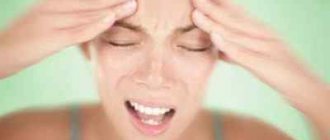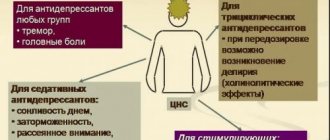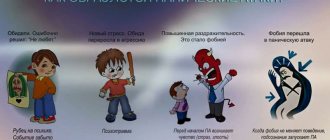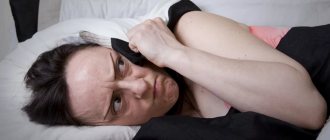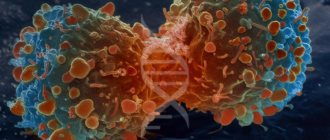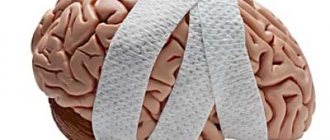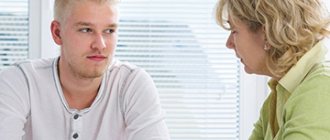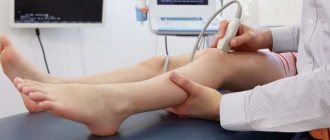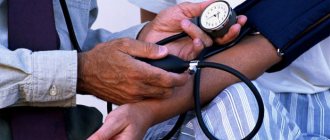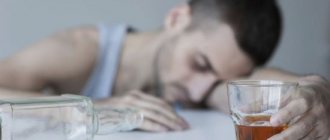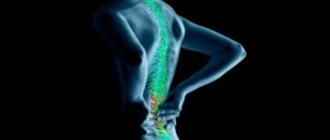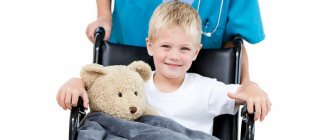| This article or section contains a list of sources or external references, but the sources of individual statements remain unclear due to a lack of footnotes. Claims that are not supported by sources may be questioned and removed. You can improve the article by providing more accurate citations to your sources. |
Neurology
(from ancient Greek νεῦρον - nerve, and λόγος - science; “science of nerves”) - a group of medical and biological scientific disciplines that studies the nervous system both in normal and pathological conditions[1]. Deals with the emergence of diseases of the central and peripheral parts of the nervous system, and also studies the mechanisms of their development, symptoms and possible methods of diagnosis, treatment and prevention.
A specialist who has received a higher medical education and has specialized in neurology is called a neurologist.
The branch of clinical neurology that studies nervous diseases was called neuropathology in the USSR[1].
History of the development of neurology in Russia
The development of Russian neurology as an independent clinical discipline dates back about 150 years. For the first time in July 1835, an independent course on nervous diseases was established at the Faculty of Medicine of Moscow University. Until this time, diseases of the nervous system were included in the program of private pathology and therapy. From 1835 to 1841 the course on nervous diseases was taught by Professor G.I. Sokolsky. The course included the following diseases of the nervous system: encephalitis, meningitis, arachnoiditis, myelitis, neuritis, neuralgia, etc. Then prof. G. I. Sokolsky entrusted the teaching of the course to his student and follower V. I. Varavinsky. Teaching was conducted primarily in the form of lectures. Sometimes patients from the hospital therapeutic clinic were demonstrated at the lectures. In 1869, the first department of nervous diseases was organized at Moscow University. It was headed by Professor V.I. Varavinsky’s student A.Ya. Kozhevnikov (1836-1902). The base of the clinic was the Novo-Ekaterininskaya Hospital, where 20 beds were allocated for people suffering from diseases of the nervous system. Due to the insufficient bed capacity, a second department was opened on the basis of the Staro-Catherine Hospital, which was headed by A. Ya. Kozhevnikov’s student V. K. Roth (1848-1916). Then, on the initiative of A. Ya. Kozhevnikov, a special clinic was built on Devichye Pole for the treatment of mental and nervous diseases. It was headed by one of A. Ya. Kozhevnikov’s students, S. S. Korsakov (1854-1900).
Neurology was strengthened as an independent discipline. A. Ya. Kozhevnikov trained a galaxy of talented students, with whom he created the Moscow school of neuropathologists. The first textbook on nervous diseases in Russia was written by A. Ya. Kozhevnikov in 1883. Representatives of the Moscow school are such outstanding neurologists as G. I. Rossolimo, V. A. Muratov, L. S. Minor, L. O. Darkshevich , M. S. Margulis, E. K. Sepp, A. M. Grinshtein, N. I. Grashchenkov, N. V. Konovalov, N. K. Bogolepov, E. V. Shmidt and others.
In parallel with the Moscow school, the St. Petersburg school of neuropathologists was formed. I. P. Merzheevsky (1838-1908) is considered its founder. Representatives of the St. Petersburg school are outstanding neurologists - V. M. Bekhterev, M. P. Zhukovsky, L. V. Blumenau, M. I. Astvatsaturov, B. S. Doinikov, M. P. Nikitin and others. The first neurological clinic in St. Petersburg was organized in 1881 at the Medical-Surgical Academy. Clinics were created at the departments of nervous and mental diseases at the medical faculties of universities in Kazan, Kyiv, Kharkov, Odessa and other cities, where a lot of scientific, pedagogical and medical work was also carried out. However, the Moscow and St. Petersburg schools remained leading. The main thing in the scientific research of the Moscow school was the clinical and morphological direction, and the St. Petersburg school was biological and physiological [2].
Preface
This textbook is intended for students of the nursing faculty of higher medical educational institutions.
The purpose of the textbook is to form students’ ideas about the most common neurological syndromes and common diseases of the nervous system in clinical practice, to help the student master the skills of providing first aid in emergency neurological conditions, to master the basic principles of caring for neurological patients and to solve ethical problems in communicating with seriously ill patients , elderly patients, with relatives of patients.
I.P. Pavlov said: “A nurse must have three types of qualifications: scientific
- for understanding the disease,
cardiac
- for understanding the patient and sympathizing with him,
technical
- for caring for the patient and performing medical procedures, and
psychological
- for the ability to quickly navigate in any difficult and unforeseen situation.”
This textbook fully complies with the qualification characteristics and curriculum for the training of nurses with higher education.
Animal Neurology
There is a branch of neurology devoted to nervous diseases of animals. One of the famous scientific works in this area is the book by E. Trapezov “Neurology of Domestic Animals”. Pet neurology has developed rapidly in the last 10 years, due to the greater availability of imaging tools (MRI, CT) in veterinary medicine. MRI and CT atlases of animals of different species, mainly dogs and cats, have been created. Research is being actively carried out abroad, treatment methods are being developed, and neurological diagnoses are being clarified. In Russia, the development of veterinary neurology is complicated objectively by the low availability of expensive equipment, and subjectively by the reluctance of many specialists to admit the presence of neurological diseases in animals [3][4][5].
In recent years, thanks to the emergence of new research methods, a branch called veterinary psychoneurology has begun to develop, studying the systemic relationships between the activity of the nervous system as a whole and other organs and systems. However, “veterinary psychoneurology” does not have an evidence base, due to the objective impossibility of adequate feedback from the patient (patient survey).
Neurological examination
The tests are designed to assess the patient’s attention, his orientation in time and space, memory, adequate self-esteem, judgment and ability to perceive general information. The patient may be offered number series with a request to mark a certain number (test of attention).
They ask you to give your name, location, day of the week and date. Fixation memory and immediate recall are assessed by determining the ability to repeat a series of numbers while maintaining their sequence.
Short-term (working) memory is assessed by the ability to reproduce a number of concepts after certain periods of time (for example, 5 minutes and 15 minutes). Memory for more distant events is assessed by the ability to present a convincing chronological history of one's own illness or biography.
The subject's recall of major historical events and dates or major current events can help in assessing the stock of general knowledge. Language testing includes assessment of spontaneous speech, naming, repetition, reading, writing, and comprehension.
Additional tests are also important - assessing the ability to draw and copy, the ability to perform arithmetic operations, interpret proverbs or logical problems, determine the right and left sides, name and identify parts of the body.
Cranial nerve examination
I cranial nerve
Close the patient's nostrils one at a time and apply mild stimuli (soap, toothpaste, coffee, lemon extract) to see if he can distinguish odors and correctly identify them.
II cranial nerve
Test your corrected and uncorrected visual acuity using the Snellen visual acuity chart (at distance) and the Jaeger optotype (in front of your eyes). Construct a visual field map by roughly identifying the boundaries of the visual fields in each quadrant for each eye.
The best way to do this: sit facing the patient at a distance of 60-90 cm, ask him to close his eye with his palm, without pressing on the eyeball. The other eye should be open and fixed on the bridge of the examiner's nose.
A small white object (eg, an applicator wrapped in cotton wool) is moved from the periphery to the center of the visual field until the patient sees it. The patient's visual field map is compared with a reference. Approximate perimetry and campimetry make it possible to establish the boundaries of small visual field defects.
The fundus of the eye is examined with an ophthalmoscope, and the color, size, as well as the degree of edema (swelling) and elevation of the optic nerve nipple should be described.
It is necessary to check the size and compliance with the norm of the retinal vessels, the presence of a “crossover phenomenon” that occurs due to depression of the artery at the site of its intersection with the dilated vein, the presence of hemorrhages, exudates, aneurysms, etc. Determine the presence of pathological pigmentation and other lesions on the retina, including the macula.
Ill, IV and VI cranial nerves
Describe the size, normality and shape of the pupils, their reaction to light (direct and friendly), and the convergence of the eyes.
Note the presence or absence of upper eyelid ptosis on one or both sides, eyelid lag in movement, or eyelid retraction.
Ask the subject to watch your finger move horizontally and then vertically to the right and left as the eye is first in full adduction and then in full abduction.
Check for restrictions in the movement of the eyeballs in any directions, as well as for the presence of regular rhythmic involuntary eye twitches (nystagmus). You can conduct a test for rapid voluntary movements of the eyeballs (saccades), as well as tracking (for example, with the researcher’s finger).
V cranial nerve
Palpate the masticatory and temporal muscles (the patient must clench his teeth), perform tests for opening the jaw, moving it forward, and lateral movement against resistance. Check the sensitivity of the facial skin, as well as corneal reflexes, by lightly touching the cornea with a piece of cotton wool.
VII cranial nerve
Pay attention to facial asymmetry at rest and during movement (spontaneous movements; emotionally driven movements, for example, when laughing). The subject is asked to raise his eyebrows, wrinkle his forehead, close his eyes, smile,
frown, puff out your cheeks, whistle, purse your lips, check the contraction of the chin muscles. Pay special attention to the difference in the strength of contraction of the upper and lower facial muscles.
Taste sensations on the anterior two-thirds of the tongue may be altered due to damage to the segment of the VII cranial nerve, located proximal to the chorda tympani.
Taste testing for sweet (sugar), salt, sour (lemon) and bitter (quinine) is carried out with an applicator wrapped in cotton, moistened with an appropriate solution. The applicator is touched to the lateral edge of the patient's protruding tongue approximately in the middle.
VIII cranial nerve
Test the patient's ability to hear the sound of a tuning fork, the clicking of fingers, the ticking of a watch, or whispered speech. Hearing acuity is assessed at a certain distance
and for each ear separately.
Check the air and bone conduction of sound (Rinne maneuver) and the lateralization of the sound of a tuning fork applied to the middle of the patient's forehead (Weber maneuver). Accurate quantitative testing of hearing acuity requires audiometry.
Don't forget to check your eardrums.
IX and X cranial nerves
Inspect the palate and uvula. To do this, the patient is asked to pronounce the sound “e”. Determine whether the soft palate is drooping and whether the uvula is symmetrically located. Determine the position of the uvula and palatine arches at rest.
In some people, sensitivity is detected in the tonsils, back of the pharynx and tongue. The pharyngeal gag reflex is checked by touching the back wall of the pharynx on both sides with a blunt object (for example, a spatula).
In some cases, it may be necessary to examine the ligaments using a laryngoscope.
XI cranial nerve
Test the ability to lift the shoulders (trapezius) and turn the head to each side (sternocleidomastoid) against resistance (obstruction by the examiner).
XII cranial nerve
Check the size and tone of your tongue. It is necessary to note whether there is atrophy, whether the tongue deviates when protruding from the midline, or whether there is tremor, trembling or twitching of the tongue.
Motor activity study
Muscle strength is sequentially determined during basic movements in each joint (Table 160-1). The results of the active movement test should be recorded using a rating scale (for example, 0 - no movement; 1 - twitching or weak contraction in which there is no movement in the joint; 2 - there is movement in the joint, but it is impossible to overcome the weight of the limb; 3 - there is
Fig, 160-1. Distribution of cutaneous sensitivity (left) and skin zones innervated by individual nerves (right). Rear surface (names)
top down).
Rice. 160-2. Distribution of cutaneous sensitivity (left) and skin zones innervated by individual nerves (right).
Table 160-
1 Muscles that carry out movements in joints
Table 160-1 Muscles that carry out movements in joints
movement with overcoming the weight of the limb, but it is impossible when resisting; 4 - movement in the joint is carried out with some resistance from the examiner; 5 - movement is carried out in full force; You can enter additional gradations within the scale by adding a (+) or (-) sign to the result.
In addition, pay attention to the speed of movement, the ability to quickly change muscle contraction to relaxation, and the onset of fatigue when repeating movements. You should check for loss of muscle volume and mass (atrophy), as well as involuntary pathological contractions of individual groups of muscle fibers (fasciculation).
Involuntary muscle contractions are determined at rest, while maintaining a certain body posture and active voluntary movement.
Rhythmic involuntary muscle contractions are defined by the term tremor, while less regular muscle contractions fall under the concepts of choreoathetosis, large limb hyperkinesis, myoclonus and tics.
Reflexes
The following are the commonly studied important muscle stretch reflexes, as well as the spinal cord segments in which their reflex arcs are represented: biceps tendon reflex C56; reflex from the tendon of the triceps muscle of the shoulder C67 8; carporadial reflex C5 6; knee (patellar, quadriceps reflex, Westphal reflex, Erb reflex) L234; Achilles (heel) reflex L5, Sr The following gradation scale is used: 0 - no reflex, 1 - weakened reflex, 2 - normal, 3 - enhanced reflex (hyperactive), 4 - enhanced reflex + clonus (repeated rhythmic contractions of muscles with increased stretching ). The plantar (plantar) reflex is induced using the blunt end of any object, for example, the handle of a neurological hammer, a key. The reflex is examined by applying a line irritation to the skin of the outer edge of the sole (from the heel to the base of the big toe). Babinski's pathological reflex is extension of the big toe. In some cases, this is accompanied by spreading of the remaining toes and flexion in the ankle, knee and hip joints of varying degrees of severity. (Normally, there is slight plantar flexion of the big toe.) Sometimes it is important to check the abdominal (abdominal) and anal reflexes, as well as additional muscle stretch reflexes.
Sensitivity study
In most cases, it is enough to examine the pain, tactile, muscle-joint and vibration sensitivity of each of the four limbs (Fig. 160-1 and 160-2). However, in some cases a more detailed study is required.
In patients with brain damage, changes in “discriminatory sensitivity” may be observed, for example, the ability to distinguish between two stimuli when exposed to them simultaneously is impaired, accurately determine the location of the stimulus, distinguish between injections applied simultaneously at a close distance (two-point discrimination), and identify objects using the sense of touch (stereognosis), assess the heaviness of an object, its texture, recognize signs and letters written on the skin (graphesthesia).
Coordination and gait
Tests for coordination of movements: the ability to touch the tip of the index finger to the finger of the examiner (finger-toe test), the ability to move the heel of one foot along the shin of the other leg from the knee joint down (heel-knee test).
For some patients, additional tests are useful: drawing objects in the air with a finger, accurately matching the index finger with the thumb (or with any other) finger.
In all cases, it is necessary to check the patient's ability to stand with his toes and heels together, with his eyes closed (Romberg pose), to walk in a straight line with one leg in front of the other (tandem gait), and to turn.
Source: https://naromed.ru/med/neurologya/nevrl_obsled.htm
Famous neurologists
See also: Category:Neurologists
| The list of examples in this article or its section is not based on authoritative sources directly about the subject of the article or its section. Add links to sources that cover the topic of this article (or section) as a whole, containing these list items as examples. Otherwise, the section may be deleted. This mark was set on April 30, 2020 . |
| List of neurologists |
|
